17th C. Diminutive William and Mary Kingwood Strongbox or Coffre Fort, C. 1690.
Sold
Request Information
Follow Us
17th C. Diminutive William and Mary Kingwood Strongbox or Coffre Fort, C. 1690.
A William and Mary Kingwood/Princes oyster strongbox or Coffre Fort, circa 1680-1700, England. Adorned with highly decorative gilt brass strapwork and decorated entirely in knife cut oysters of kingwood, this box is fit for the most discerning of collectors. The large gilt brass shield-shaped clasp opens on a push-spring release to reveal a box interior lined in rosewood with two drawers and securing bolts.
Once the lid is opened you can reach inside to slide the original gilt brass bolt lock to open the fall. Once the fall is open you will find two drawers lined in walnut divided by a secret compartment.
The box appears decorative, but it was also very difficult to break open or steal. It has a strong lock to the centre and two bolts concealed in the sides, so that it could be screwed down into floorboards if necessary or that of a horse-drawn carriage. Strong-boxes veneered in oysters of Princewood such as this were luxury objects.
The cabinet-makers who would have constructed and veneered the carcase apparently sold them, often using tropical hardwood veneers, and mounted it with sets of mounts, handles and locks bought in from brass founders. The elaborate veneering and conspicuous gilded brass mounts show that the appearance of these objects was important.
Thomas Pistor, of Ludgate Hill, London worked with the renowned cabinetmaker Gerrit Jensen. Gerrit Jensen supplied a walnut-veneered ‘strongbox’ to Colonel James Grahame in 1668, Levens Hall. It is recorded that Thomas Pistor’s remaining stock was sold off post his death in 1711, included ‘three fine Princes wood strongboxes’.
The present example relates almost exactly to a strongbox held in the Victoria & Albert Museum. Accession Number: W.10-1951.
Condition
Good. Wear consistent with age and use. Superb original condition. Fabulous colour.
Dimensions
Height: 8.27 in. (21 cm)
Width: 14.18 in. (36 cm)
Depth: 9.45 in. (24 cm)
PREVIOUSLY SOLD
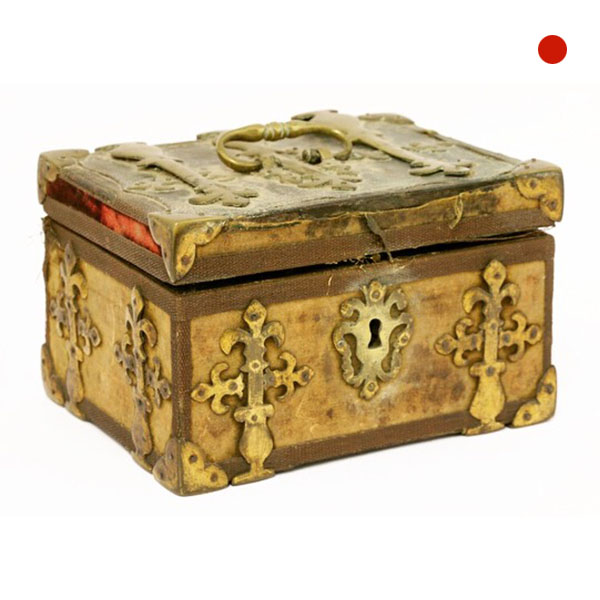
17th-18th Century Silk Covered Strongbox Jewel Casket
17th-Century Silk Covered Strongbox Jewel Casket. Occasionally an object can certainly grab your imagination, this casket of small proportions is no exception.
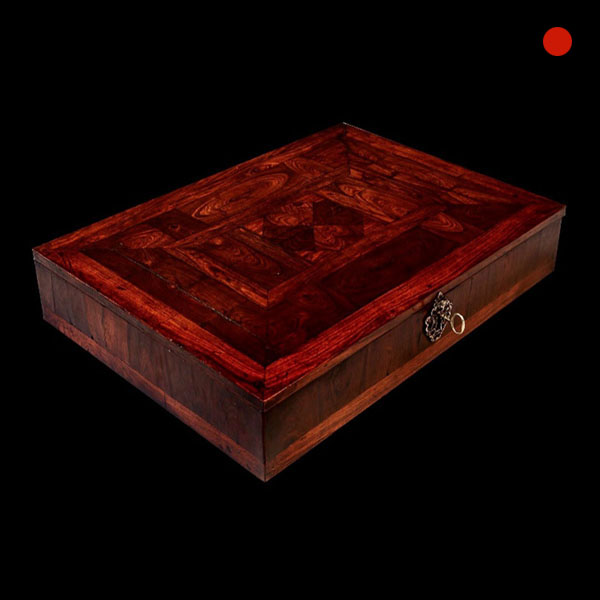
Charles II Kingwood Oyster Lace Box
An extremely rare Charles II kingwood oyster lace box 1660-1675. The box through its kingwood (also known as princeswood) oysters laid in a parquetry fashion, relate closely to an important and exceptionally rare triad set, in private collection at Dryton House.
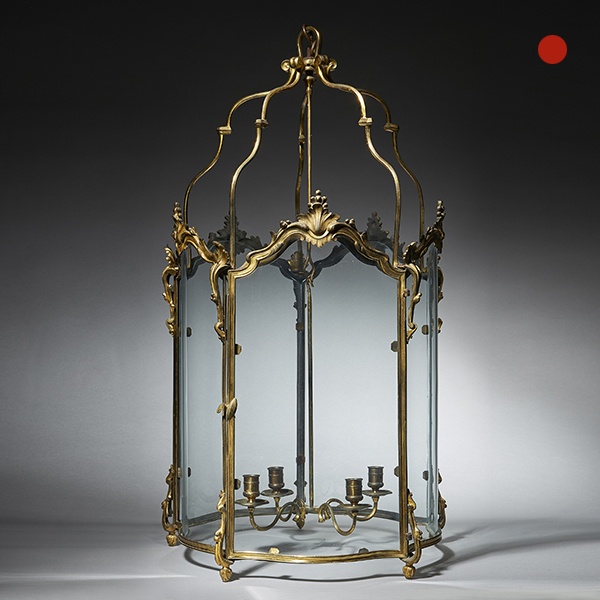
English 18th Century Chippendale George III Gilt Brass Rococo Hall Lantern
English 18th Century Chippendale George III Gilt Brass Rococo Hall Lantern Sold Follow UsEnglish 18th Century Chippendale George III Gilt Brass Rococo Hall Lantern A superb and original late 18th century George III rococo large gilt brass...
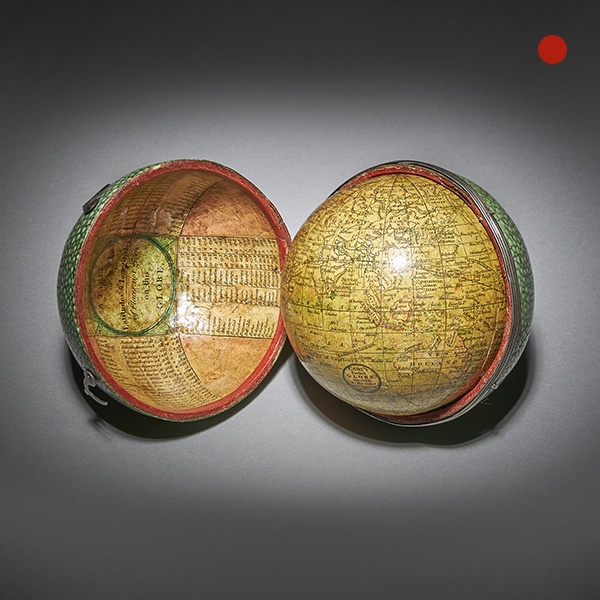
Fine 18th Century English Terrestrial Pocket Globe by Cary, London, 1791
Fine 18th Century English Terrestrial Pocket Globe by Cary, London, 1791 Sold Follow UsFine 18th Century English Terrestrial Pocket Globe by Cary, London, 1791 Cary’s Pocket globe, agreeable to the latest discoveries, London: J&W Cary,...
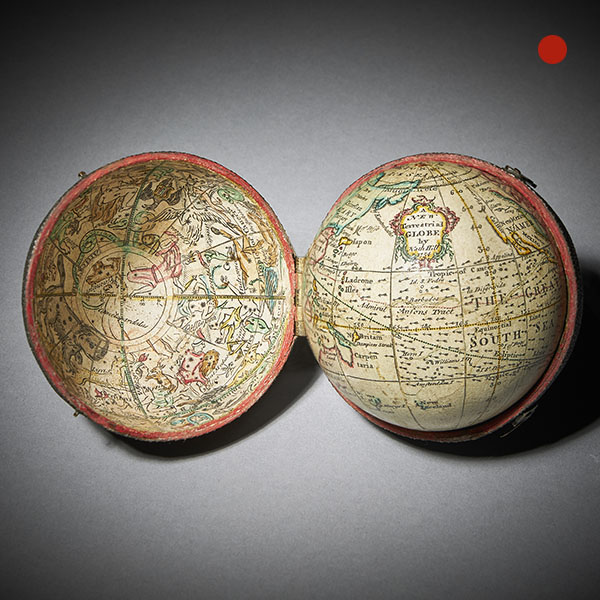
Fine English Celestial Pocket Globe by Nathaniel Hill
Fine 18th Century English Celestial Pocket Globe by Nathaniel Hill, London, 1754 Sold Follow UsFine 18th Century English Celestial Pocket Globe by Nathaniel Hill, London, 1754 A fine and rare 18th century English terrestrial and celestial...

17th-18th Century Silk Covered Strongbox Jewel Casket
17th-Century Silk Covered Strongbox Jewel Casket. Occasionally an object can certainly grab your imagination, this casket of small proportions is no exception.

Charles II Kingwood Oyster Lace Box
An extremely rare Charles II kingwood oyster lace box 1660-1675. The box through its kingwood (also known as princeswood) oysters laid in a parquetry fashion, relate closely to an important and exceptionally rare triad set, in private collection at Dryton House.

English 18th Century Chippendale George III Gilt Brass Rococo Hall Lantern
English 18th Century Chippendale George III Gilt Brass Rococo Hall Lantern Sold Follow UsEnglish 18th Century Chippendale George III Gilt Brass Rococo Hall Lantern A superb and original late 18th century George III rococo large gilt brass...

Fine 18th Century English Terrestrial Pocket Globe by Cary, London, 1791
Fine 18th Century English Terrestrial Pocket Globe by Cary, London, 1791 Sold Follow UsFine 18th Century English Terrestrial Pocket Globe by Cary, London, 1791 Cary’s Pocket globe, agreeable to the latest discoveries, London: J&W Cary,...

Fine English Celestial Pocket Globe by Nathaniel Hill
Fine 18th Century English Celestial Pocket Globe by Nathaniel Hill, London, 1754 Sold Follow UsFine 18th Century English Celestial Pocket Globe by Nathaniel Hill, London, 1754 A fine and rare 18th century English terrestrial and celestial...
YOU MAY ALSO LIKE
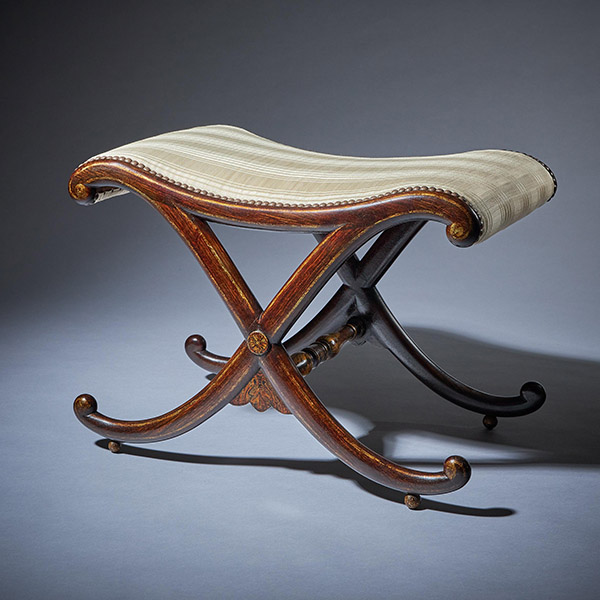
Regency Antique Simulated Rosewood Gilt Lined X Frame Stool
Regency Antique Simulated Rosewood Gilt Lined X Frame Stool £3,900Follow UsRegency Antique Simulated Rosewood Gilt Lined X Frame Stool A beautifully drawn Regency simulated rosewood, decorated and gilt lined x-frame stool in the manner of...
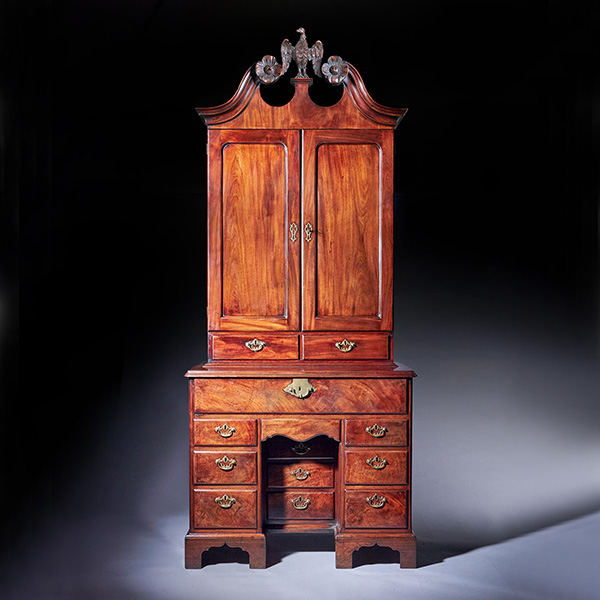
A George II Irish Mahogany Secretaire Kneehole Bookcase Att. C. Hearn
A George II Irish Mahogany Secretaire Kneehole Bookcase Att. C. Hearn £45,900Follow UsA George II Irish Mahogany Secretaire Kneehole Bookcase Att. C. Hearn An original and rare two-part George II 18th century Irish architects figured mahogany...
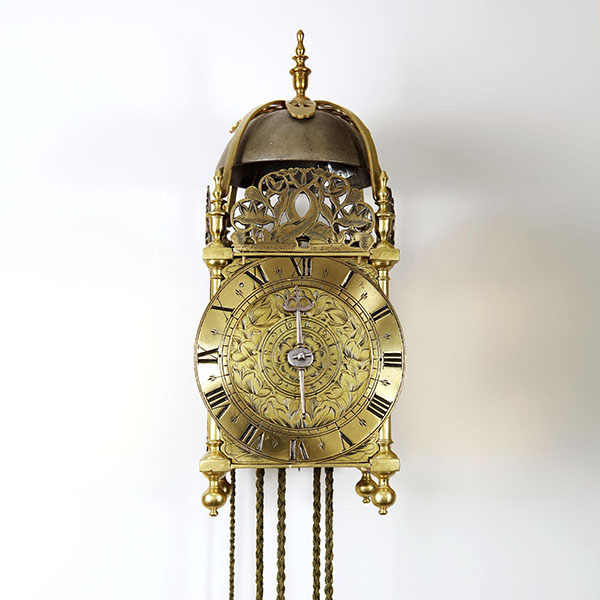
17th Century Lantern Alarm Clock by Johannes Quelch, Oxford
17th Century Lantern Alarm Clock by Johannes Quelch, Oxford £14,000Follow Us17th Century Lantern Alarm Clock by Johannes Quelch, Oxford An English 17th century lantern clock made of brass and iron, circa 1665-1670. The clock consists of going...
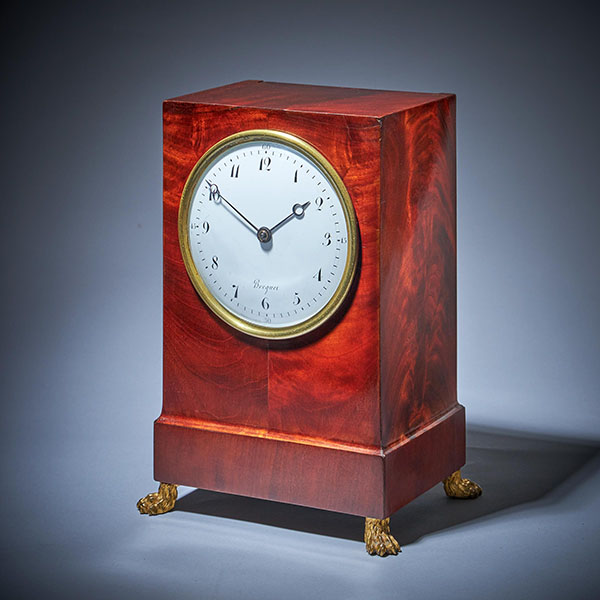
19th-Century Flame Mahogany Mantel Clock by BREGUET Raised by Lion Paw Feet
19th-Century Flame Mahogany Mantel Clock by BREGUET Raised by Lion Paw Feet £23,500Follow Us19th-Century Flame Mahogany Mantel Clock by BREGUET Raised by Lion Paw Feet EXTREMELY RARE MANTEL CLOCK WITH A FIGURED MAHOGANY-VENEERED CASE by A-L...
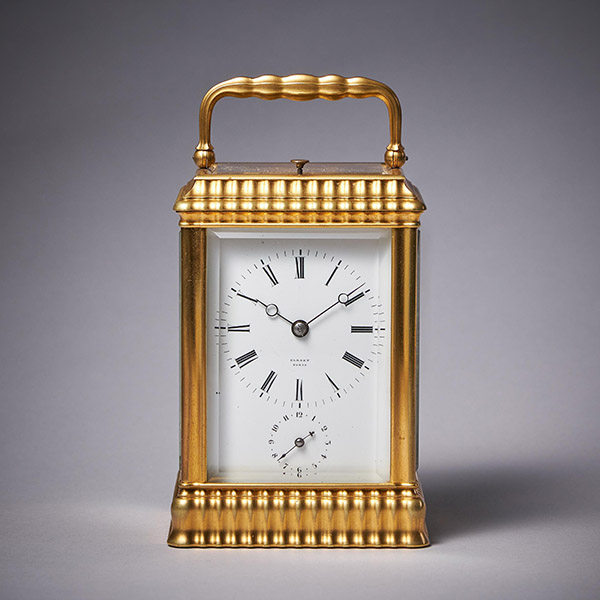
Unusual Ribbed Eight-Day Repeating Striking Gilt-Brass Gorge Case Carriage Clock
Unusual Ribbed Eight-Day Repeating Striking Gilt-Brass Gorge Case Carriage Clock £4,850Follow UsUnusual Ribbed Eight-Day Repeating Striking Gilt-Brass Gorge Case Carriage Clock CaseThe clock has a gilt-brass case which is a variation on the...
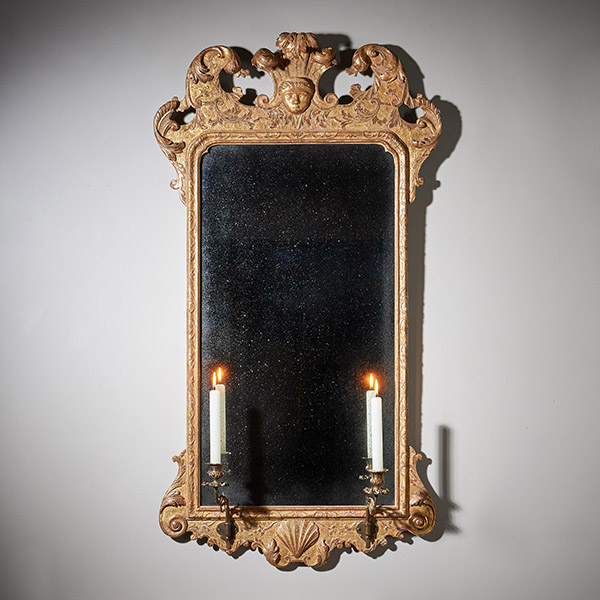
Fine 18th Century George I Gilt Gesso Pier or Console Mirror, Manner of Belchier
Fine 18th Century George I Gilt Gesso Pier or Console Mirror, Manner of Belchier £13,900Follow UsFine 18th Century George I Gilt Gesso Pier or Console Mirror, Manner of Belchier A fine and rare early 18th century George I Gilt Gesso pier or...

Regency Antique Simulated Rosewood Gilt Lined X Frame Stool
Regency Antique Simulated Rosewood Gilt Lined X Frame Stool £3,900Follow UsRegency Antique Simulated Rosewood Gilt Lined X Frame Stool A beautifully drawn Regency simulated rosewood, decorated and gilt lined x-frame stool in the manner of...

A George II Irish Mahogany Secretaire Kneehole Bookcase Att. C. Hearn
A George II Irish Mahogany Secretaire Kneehole Bookcase Att. C. Hearn £45,900Follow UsA George II Irish Mahogany Secretaire Kneehole Bookcase Att. C. Hearn An original and rare two-part George II 18th century Irish architects figured mahogany...

17th Century Lantern Alarm Clock by Johannes Quelch, Oxford
17th Century Lantern Alarm Clock by Johannes Quelch, Oxford £14,000Follow Us17th Century Lantern Alarm Clock by Johannes Quelch, Oxford An English 17th century lantern clock made of brass and iron, circa 1665-1670. The clock consists of going...

19th-Century Flame Mahogany Mantel Clock by BREGUET Raised by Lion Paw Feet
19th-Century Flame Mahogany Mantel Clock by BREGUET Raised by Lion Paw Feet £23,500Follow Us19th-Century Flame Mahogany Mantel Clock by BREGUET Raised by Lion Paw Feet EXTREMELY RARE MANTEL CLOCK WITH A FIGURED MAHOGANY-VENEERED CASE by A-L...

Unusual Ribbed Eight-Day Repeating Striking Gilt-Brass Gorge Case Carriage Clock
Unusual Ribbed Eight-Day Repeating Striking Gilt-Brass Gorge Case Carriage Clock £4,850Follow UsUnusual Ribbed Eight-Day Repeating Striking Gilt-Brass Gorge Case Carriage Clock CaseThe clock has a gilt-brass case which is a variation on the...

Fine 18th Century George I Gilt Gesso Pier or Console Mirror, Manner of Belchier
Fine 18th Century George I Gilt Gesso Pier or Console Mirror, Manner of Belchier £13,900Follow UsFine 18th Century George I Gilt Gesso Pier or Console Mirror, Manner of Belchier A fine and rare early 18th century George I Gilt Gesso pier or...
















